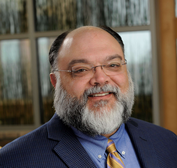Independent Hospitals Prefer To Stay That Way In Wake Of Vanguard-Tufts Deal
Seven years after it bought three Central Massachusetts hospitals, for-profit operator Vanguard Health Systems has its eye on expansion.
A recently announced partnership with not-for-profit research hospital Tufts Medical Center in Boston will allow both institutions to seek affiliations with or acquire independent hospitals in the state.
“We were looking for an academic partner, and they were trying to determine where their future destiny lied,” said Dennis Irish, a spokesman for Vanguard.
The two organizations believe other hospitals are trying to determine the same thing, given the state and federal health care reforms that are changing the industry.
To deal with expected gradual shifts to global payments and accountable care organizations (ACOs), hospitals are trying to determine how they can best share risk, improve quality of care and reduce costs.
Irish said the Vanguard-Tufts partnership adds another option for hospitals in the state, where the dominant providers are the quickly growing not-for-profit Partners HealthCare and for-profit Steward Health Care.
Vanguard and Tufts will be looking for varying levels of association with independent hospitals, ranging from affiliations to partnerships and acquisitions.
If acquisitions do take place, the organization being acquired could choose whether it wanted to be for-profit or not-for-profit, Irish said.
Noting the comparatively lower costs of care at Vanguard properties Saint Vincent Hospital in Worcester and MetroWest Medical Center — which includes two hospitals in Natick and Framingham — Irish said Vanguard wants the partnership to be a low-cost option and would only be interested in providers who share that goal.
Hospitals React
There are three independent hospital operators remaining in Central Massachusetts: Heywood Hospital in Gardner, Milford Regional Medical Center and Harrington HealthCare System in Southbridge.
Executives at the three organizations routinely take calls from interested buyers and potential partners. But all three prefer to remain independent, though they acknowledge they will likely need to expand or increase their partnerships and affiliations to better manage risk under new payment and care models the state called for in the reform law passed this year.
“We are having those conversations,” said Heywood CEO Winnfield Brown.
But he added: “I don't believe those conversations will require that we merge into another system. I think there are other options.”
Francis Saba, CEO of Milford Regional Medical Center, has said the board at his 121-bed acute care facility is having the same conversations about the future, though a full-scale acquisition is unlikely.
“Everyone seems to be partnering up and consolidating. It does get our attention,” Saba said. “You can never say never about becoming part of a big network.”
Milford's 2011 budget surplus hit a five-year high at more than $11.5 million, making it an attractive target for bigger systems. Saba said other systems have reached out to gauge interest, but so far their advances have been politely rebuked.
“It's nice to be wanted,” he said.
Harrington is another organization that has had a strong few years, growing revenue more than 30 percent over the past three years and its surplus from less than $4 million in 2010 to more than $8 million in 2011.
But even Harrington CEO Ed Moore admitted it will be hard to replicate that kind of growth, which came from higher volumes and higher reimbursement rates.
He said Harrington plans to deepen its collaboration with Worcester-based Fallon Community Health Plan to manage and analyze patient populations with the goal of coordinating care and keeping costs down. Essentially, the hospital wants to build the infrastructure to manage patient populations under an accountable care model, which is called for in the new state law.
But whether Harrington has the size necessary to form its own ACO remains to be seen.
“The overall [area] market has enough covered lives,” Moore said. “The question will be: Will they be aligned with enough of our physicians so we can qualify when we believe we have the right infrastructure and contracts to do that? Or do we become a part of someone else's ACO?”
Geography Matters
Interestingly, all three independent hospitals credit their geography for their ability to remain independent.
Location may even be the difference one day between being gobbled up by a larger system or not.
“We've got a strong community hospital in a somewhat isolated geography,” Brown said.
Saba, too, said Milford has a “pretty good thing going on.”
“We can't take credit for the geography, but we have a really good geography here,” he said. “We're not really close to a lot of competitors and we have a growing region here that needs health care.”
Read more
Vanguard, Tufts Medical Link Up In New Network
Major changes — plus a notable acquisition — revved up Harrington HealthCare













0 Comments